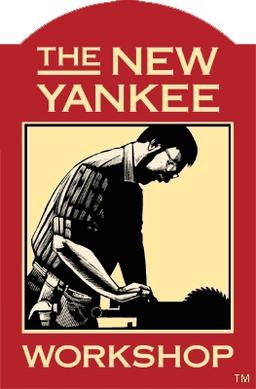Conventional wisdom regarding finishing cutting boards and other food prep surfaces is to coat them heavily with mineral oil and/or a food safe paste wax to “seal” and/or “condition” them. Seri Robinson asserts otherwise, her research has shown that any finish applied to wood decreases its natural anti-microbial properties.


But then the wood cracks and starts to fall apart? Or perhaps this only happens with glued projects?
There are a lot of questions I have.
I found a more scholarly article credited to several authors including Robinson which specifically focuses on wood’s absorption of microbes depending on the finish applied, testing no finish, mineral oil, and raw linseed oil, and different amounts of applications thereof.
This study mentions the end grain structure of the four wood species tested. The test samples were “4.5 x 4.5 x 2 cm with the tangential face on the broad side.” Dafuq does “tangential” mean in this context? As far as I can tell the science hippy bullshit boils down to “we put bacteria on the wood, and then we looked to see if we could find any bacteria on the wood after 0, 1 and 24 hours.”
Both the study and the article assume relying on wood’s “natural anti-microbial properties” and only rinsing with cold water. I’ve been oiling my cutting boards and briefly washing them with warm water and soap. Who cares if bacteria is still on the surface if I wash the damn thing with Dawn?
“Cross-contamination is a myth, but if you’re gonna cook meat but not veggies cut the veggies first.” What?
Does “tangential” mean plain sawn, quarter sawn or end grain? The FineWoodworking article shows pictures of a simple plank showing plain sawn/cathedral grain. The article says the wood species tested were chosen for their differing end grain structures. But then the article talks about avoiding glued-up boards because the glue is a problem for the wicking action.
“Conditioning is a myth {…} conflicting grain orientations can also lead to cracking and warping after repeated wet/dry cycles.”
Seri Robinson is a Ph.D. of woodology and I’m just some guy with a table saw, but…I’m not sure the science is done here.
Tangential on the broad face would mean it’s flat sawn (plain sawn). Like how woodworkers care about tangential vs radial shrinkage of wood species.
The article discusses glue joints. Did you make it through the whole article?
Hey hey watch your blood pressure. I’m sure he didn’t mean it.
Wood is naturally porous, which allows bacteria and microorganisms places to live and grow. It’s extremely difficult to clean out porous surfaces which is why coating is preferred.
I’ll be upfront and say I’m no scientist, but working with food for a large portion of my life has shown me that wood utensils and unfinished wood products are less safe due to the bacterial growth issues. The alternative is using plastic… Pick your poison?
I have used bamboo for a cutting board and although it is neat, I am hesitant to use it due to the bamboo splitting (probably my bad).
Edit: https://www.fsis.usda.gov/food-safety/safe-food-handling-and-preparation/food-safety-basics/cutting-boards
Bamboo boards are best according to usda, followed by SOLID wood boards.
Ftfa: Unfinished wood is naturally antimicrobial. In fact, when rinsed and dried properly between uses, it is self-cleaning. Wood finishes only serve to undermine this amazing property of wood.
while partially true, unoiled wood also tends to take in any kind of fluid deeper, and that includes coffee stains, oil stains, and smells. i honestly don’t prefer my woodworks start smelling a bit over time.
Yeah I’m not sure I’m going to stop oiling my counter. But if you just used a plank and replaced it every year? Probably better than spending $500 on a boos block and treating it like an heirloom.
Did you see the pictures in the article showing how stains disappear?
If that was true wood would not decompose.
Wood that is kept dry is very resistant to decomposition.
well it decomposes slowly, over 20 years, while continuously being exposed to moisture
Knife cuts break the board down more than bacteria and moisture.
ugh, no thanks. plastics for food is one of the most vile inventions of humankind. food starts to “sweat”, and it gets gross; it starts to smell really fast and bacteria and fungi grow on the food. especially if you put food in the fridge in a plastics box.
Let’s branch to a conversation about micorplastics… https://www.foodandwine.com/are-plastic-cutting-boards-safe-8624857
Bamboo cutting boards are almost as bad as glass for dulling your knives.
One problem at a time. I’ve read claims before that Bamboo is antimicrobial naturally. Aside from the knife’s dulling, is it the safest option available at the moment? Need to buy my next board soon.
The science on plain wood being safe has been around for quite a while. I remember reading a study many years ago where some scientists mashed bacteria all over the surface of a wood cutting board, rinsed it, dried it, and then tried everything they could to get the bacteria to transfer to fresh meat (including trying to pound the meat into the board with a mallet) and the meat remained uncontaminated. So, it seems like the safest option is a single unglued plank of wood.
Glue joints don’t act like wood, so presumably that makes bamboo act less like plain wood safety-wise.
The problem with plastic is that the knife marks can retain bacteria (which, unlike wood, the plastic doesn’t kill).
I’m going to hypothesize here that bamboo works similarly to wood in the “wicks water and bacteria in, bacteria get stuck, water evaporates out desiccating bacteria to death” mechanism. The issue I see is the whole “glue joints are bad” thing from the article. Because bamboo grows in hollow tubes, there’s no such thing as 12/4 bamboo, you have to glue up a bunch of tiny pieces, so there are lots of glue joints.